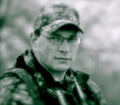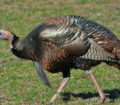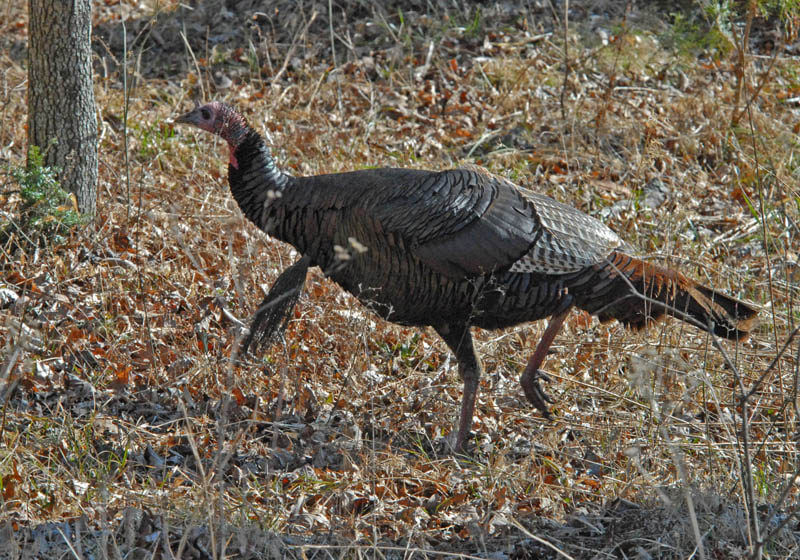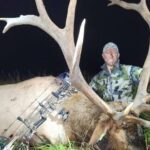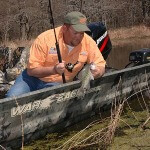Editor’s Note: Matt Van Cise of Brookville, Pennsylvania, loves to hunt and call turkeys. He’s won seven World Open Championships, five Senior Grand Nationals, two Grand National Friction Calling Championships, a World Friction Championship, three U.S. Opens, the Mid-American Open and the North American Open. If you include all the smaller calling contests, he’s probably won over 100. He recently won the 2018 National Wild Turkey Federation (NWTF) (www.nwtf.org) Grand Nation Friction Calling Contest.
For me, a stubborn turkey is a gobbler that’s most often with hens. In my section of the country, most of a turkey’s strut zones are out in fields where hens have a better chance of hearing and seeing the gobblers strut, so they can go to them. If I have an opportunity to watch a turkey in a field the day before I hunt, I’ll try to get in that field early the next day. Most people set-up a blind on the edge of a field and then try to call the gobbler to them. But very rarely will you call that gobbler away from his hens. I set-up my Primos Double Bull Blind (http://www.primos.com/) with Mossy Oak (www.mossyoak.com) camouflage in a place where I believe the gobbler wants to be, usually the last place I’ve seen that gobbler before he’s left the field. I use Zink’s Avian-X decoys (https://www.avian-x.com/).
 Some of those smart gobblers will fly down to the middle of the field and call the hens out of the woods right to the middle of the field. When I have to deal with a gobbler like this, I set-up my blind out in the middle of the field and put gobbler and hen decoys around it. I’ve never found that decoys prevent a gobbler from coming within gun range. Then I let the tom tell me how to call to him. If he’s gobbling, I’ll call as long as he’s answering. If he’s gobbling rarely, I just give him very-soft clucks and purrs. I try to determine what type of calling that gobbler will respond to on that day.
Some of those smart gobblers will fly down to the middle of the field and call the hens out of the woods right to the middle of the field. When I have to deal with a gobbler like this, I set-up my blind out in the middle of the field and put gobbler and hen decoys around it. I’ve never found that decoys prevent a gobbler from coming within gun range. Then I let the tom tell me how to call to him. If he’s gobbling, I’ll call as long as he’s answering. If he’s gobbling rarely, I just give him very-soft clucks and purrs. I try to determine what type of calling that gobbler will respond to on that day.
I often have to hunt turkeys that have experienced hunting pressure. To take those gobblers, I get as close as I possibly can while the gobbler is still on the roost. I want to get to that bird before any-other hunter has the opportunity. I harvest many of my Pennsylvania turkeys within 5 minutes of the turkey’s hitting the ground. Sometimes I set-up my blind right-under the gobbler’s roost tree. To get that close to a turkey, I watch him the night before I plan to hunt. Then I can see where he’s flying up to roost. I go to the roosting spot at least an hour before daylight. I set-up my blind underneath the turkey, set-out some decoys and wait for daylight. As long as the night is pitch dark, I can get away with getting in that close. The sounds of setting-up the blind and the decoys don’t seem to spook the turkey, but I’m as quiet as I can be when I use this tactic.
 If a turkey stays in the field until dark before flying up to roost, I probably won’t pinpoint the exact roost tree. I know a gobbler usually roosts within 50 yards of leaving the field, so I set-up my blind about 25 yards from the edge of the field in the direction the gobbler has flown. My success rate on getting close to the gobbler, setting-up a blind and putting-out decoys is almost 100 percent. Four times last season a hunter who was with me took the gobbler as soon as the bird’s feet hit the ground, or I took the gobbler just as his toenails touched down. Those four birds flew into the decoys and were standing within 10 yards of our blind.
If a turkey stays in the field until dark before flying up to roost, I probably won’t pinpoint the exact roost tree. I know a gobbler usually roosts within 50 yards of leaving the field, so I set-up my blind about 25 yards from the edge of the field in the direction the gobbler has flown. My success rate on getting close to the gobbler, setting-up a blind and putting-out decoys is almost 100 percent. Four times last season a hunter who was with me took the gobbler as soon as the bird’s feet hit the ground, or I took the gobbler just as his toenails touched down. Those four birds flew into the decoys and were standing within 10 yards of our blind.
To see and learn more about the custom calls that Van Cise is making, go to his Facebook page at High Class Calls by Matt Van Cise https://www.facebook.com/Highclasscalls, or you can go to his personal Facebook page Matt Van Cise www.facebook.com/matt.vancise.
To learn more about turkey hunting, check out John E. Phillips’ print, Audible and Kindle turkey books at https://johninthewild.com/books/#turkey. You also can download a free Kindle app that enables you to read the book on your iPad, computer or SmartPhone. For a free copy of John E. Phillips’ “The Turkey Gobbler Getter Manual,” go to https://johninthewild.com/free-books/.

